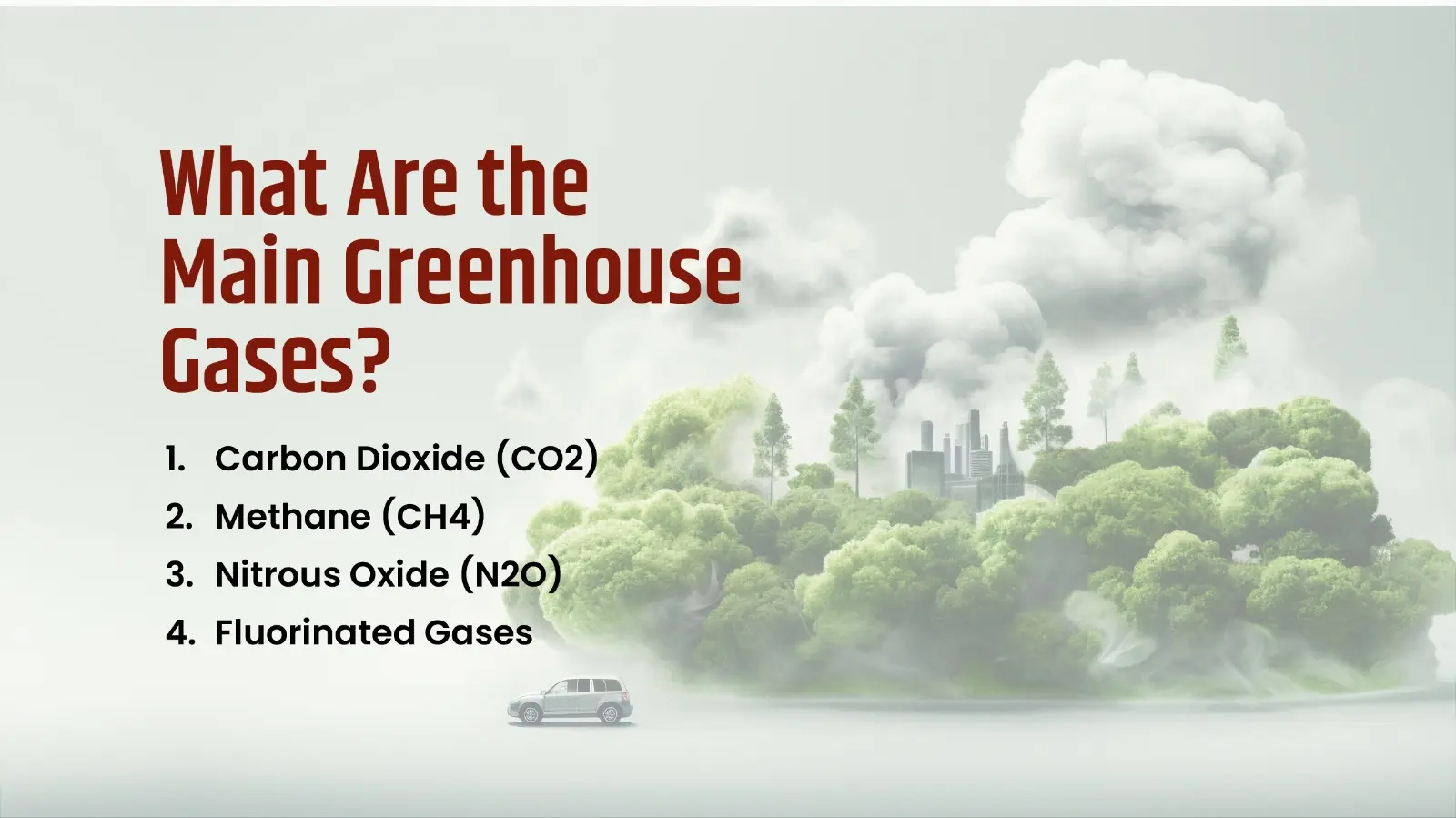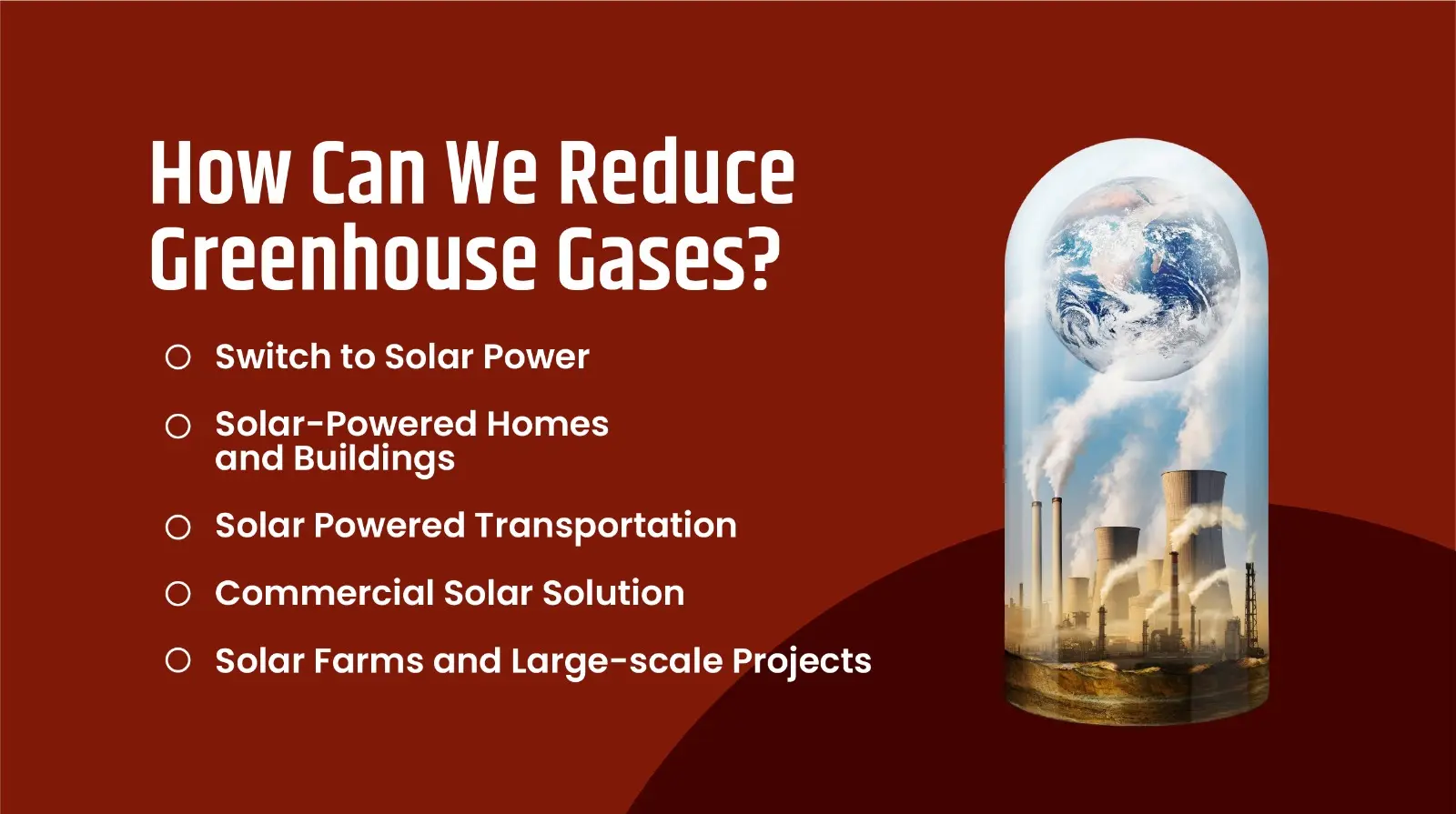What are Greenhouse Gases?
Climate change is a looming crisis intensified by greenhouse gases. These gases exist naturally in the atmosphere and are actually significant to sustain life. However, with the constant human activities, these are rising at an alarming rate, causing a problem.
In this blog, we’ll take a closer look at how GHG greenhouse gases impact the environment. And also explore one of the best solutions out there, solar energy.
Greenhouse Gases and the Greenhouse Effect
The greenhouse effect is a natural process that keeps the Earth warm and livable. There won't be any life without it, as the planet will be too cold to support any life.
Let's see how the process works in detail:
1. Sunlight Absorption
This is the start of the whole process. Sun's rays reach our planet and illuminate it. Our Earth absorbs this energy obtained from the sun and generates a suitable environment. You can probably guess that it is this warmth that makes the sustenance of life possible.
2. Heat Radiation
Once the Earth absorbs the sunlight, the remaining heat is sent back towards space.
3. Greenhouse Gases Trap Heat
However, some of the radiated heat doesn't escape into space as the greenhouse gases in the atmosphere trap it. This heat causes further warming.
4. Normal Balance
Under normal conditions, the greenhouse effect is not something to worry about. However, the continuing concentration of GHG greenhouse gases is a cause of worry for all of us.
This is causing a major problem for the environment known as global warming. This, in turn, causes a lot of disruption to the weather patterns and leads to negative environmental consequences.
What Are the Main Greenhouse Gases?

1. Carbon Dioxide (CO2)
Carbon Dioxide (CO2) is by far the biggest contributor to climate change. When we humans burn fossil fuels like coal, oil, or natural gas for energy, there's a huge production of these gases.
There's another thing that adds to the increase in CO2 levels. It's deforestation. You might already know that trees absorb carbon dioxide from the atmosphere, helping balance it all out. But by cutting the trees down, there will be very little CO2 absorption.
2. Methane (CH4)
While Methane makes up a smaller portion of greenhouse gases, it's more effective at trapping heat than CO2! These gases are released when agricultural practices take place, especially livestock digestion, and also from landfills or natural gas production.
3. Nitrous Oxide (N2O)
Nitrous oxide is probably familiar to you from its use in agricultural pesticides and fertilizers. Additionally, some industrial processes produce this greenhouse gas. What makes this one harmful, if you were wondering, is that it lingers in the atmosphere for a very long time.
4. Fluorinated Gases
These are another set of gases that are synthetic and contribute to the greenhouse effect. Similar to the case of N2O, these gases persist in our atmosphere for many, many years. We are sure you must have guessed how this property makes them super threatening to our climate.
Why Are Greenhouse Gases Harmful?
●Global Warming – As the levels of greenhouse gas rise, global temperatures spike up. The glaciers and polar ice caps melt leading to high sea levels.
●Extreme Weather – The imbalance of greenhouse gases impacts the environment negatively. These gases lead to severe weather conditions. Storms, droughts and frequent heat waves cause unfavourable weather conditions.
●Threat to Ecosystems – The increasing greenhouse gases disrupt the ecosystem to a great extent. It becomes difficult for the animals, birds and other species to survive with the increasing change in the climate.
● Human Health Risks – Apart from environmental issues, this rapid change in temperature worsens air pollution, leading to respiratory problems. The change can also increase the speed of various diseases which prove to be harmful to humans.
How Can We Reduce Greenhouse Gases?

The problem is increasing day by day, but there is still hope for improvement in today's situation. This slow and steady change will come by inculcating renewable energy
sources.
1. Switch to Solar Power
We all use large amounts of energy on a daily basis. Imagine what our world as a whole consumes. Most of this energy is from fossil fuels which cause greenhouse gas emissions. This CO2 emission can be reduced if we decide to switch to solar power.
Solar energy results in zero emissions while being adaptive to your homes, offices, corporations and even large scale industrial plants.
2. Solar-Powered Homes and Buildings
Rooftop solar panels merged with technologies like outdoor solar lighting not only protect the environment but also your monthly electricity bills. It's a one-time investment that pays off really well in all aspects.
There are so many government schemes and subsidies that will make even this one-time investment super affordable for you. You can also use solar cookers, solar water heaters and much more.
3. Solar Powered Transportation
A large number of fossil fuels are burned for driving vehicles. Travel and transport need a lot of energy and also release lots of polluting greenhouse gases.
In these cases, solar powered vehicles (EVs) can be the best choice. Instead of the prevalent gas-powered cars, they are more eco-friendly and reliable. Setting up solar charging stations will also be a nice step to motivate opting for solar solutions instead of fossil fuels.
4. Commercial Solar Solution
Our commerce sector is among the largest consumers of fossil fuels, which contributes to increasing pollution. Slowly, many companies are going solar by choosing commercial solar systems. Not only does this play a part towards our ecosystem, but it also proves beneficial in the long run.
5. Solar Farms and Large-scale Projects
Industries would be the next target for implementing solar energy solutions in place of fossil fuels. Factories and big projects usually pollute a lot and release toxic gases into the air. The solution? Large scale solar plants.
In areas of abundant sunlight, these rows and rows of solar panels can provide enough energy to power such factories and local communities. The government can establish these plants to meet the needs of states or countries without causing greenhouse gas emissions.
Conclusion
We all can definitely agree upon the fact that GHG greenhouse gases, albeit vital, play a very negative role in increasing pollution. It's bringing extreme climate change and global warming. To stop this continuing damage, one must opt for solar energy and solar solutions.
Navigate through the advantages and disadvantages of solar energy before customizing your own perfect solution. KLK Ventures provides a wide range of solar services. Let's move towards a green future!
